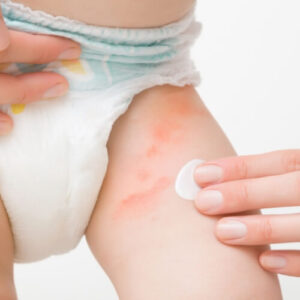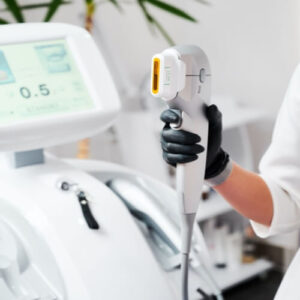Polio: symptoms and treatment
Polio and the importance of its vaccination
Taviv
Polio is considered one of the previous epidemic diseases that posed a great threat to children, prompting international efforts to work together to arrive at a vaccine that allowed the disease to be controlled.
What is polio?
Poliomyelitis is caused by an infection with the “poliovirus” which attacks the nervous system and sometimes causes paralysis. According to the World Health Organization, it hurts “who will” children under the age of five, and leads to irreversible paralysis of one in every 100 children infected with the virus.
The disease also causes death 5-10% Among the injured, the main cause of death is paralysis of the respiratory muscles.
However, global efforts have led to a decrease in the number of new cases reported, from 350 thousand cases in 1988, to almost 6 cases in 2021.
Symptoms of polio virus infection
Although the disease is highly contagious, the symptoms are not constant and vary from patient to patient, and they can be divided according to the following:
Mild symptoms
They are symptoms similar to a cold, like 90% Of those who are infected, they do not show any symptoms, or they have some mild symptoms similar to a cold.
As noted by the Centers for Disease Control and Prevention “CDC” Only 25% of those infected show cold-like symptoms, which include:
- General fatigue
- Hyperthermia
- Headache
- Muscle aches and stomach aches
- Nausea and vomiting
- sore throat
severe symptoms and paralysis
A small percentage of patients have more severe symptoms that affect the brain and spinal cord, including:
- Numbness, tingling and sensory disturbance: Patients complain of a needle-like sensation in the leg.
- meningitis: The virus may reach the meninges, which are the tissue surrounding the brain and spinal cord.
- Paralysis: What can be described as the patient’s inability to move his limbs and body, in addition to general fatigue and weakness in the forearms or legs or both.
Post polio syndrome
Patients who have recovered from polio may develop muscle pain for life.
Symptoms of paralysis and muscle weakness may appear even 15 to 40 years after injury, and this is called post-paralysis syndrome.
In addition, very severe cases of the disease may cause permanent paralysis and disability of the patient, and lead to death.
Ways of transmission of the virus
The virus responsible for polio is highly contagious, and infects only humans, it is transmitted from person to person by contact, when it sinks into the intestines and throat.
The virus can also be found in food and water in places and conditions with poor sanitary conditions.
The virus enters the mouth through the following:
- Touching feces or the remains of a sick person on surfaces exposed to contaminated feces
- Exposure to droplets spread from the sneeze of an infected person, but this method is considered less contagious than the previous one.
The infected patient may transmit the infection in the period preceding the onset of the disease, and the infection lasts up to two weeks from the onset of symptoms, such as:
- The virus lives in the intestines of an infected person for several weeks.
- People who do not show symptoms can also pass the disease on without knowing it.
Risk Factors
- Children under the age of 15 who have not received the polio vaccine
- Children under the age of five
- Living or visiting places with a high prevalence of the disease
- Places and environments with poor sanitary conditions
injury diagnosis
There is a set of procedures and surgeries that confirm the infection, after the clinical examination of the patient and taking the clinical history, the following procedures come into play:
- Lumbar puncture: This is done by using a special needle to take a sample of the patient’s cerebrospinal fluid, which is the fluid that surrounds the spinal cord and brain and protects them. The following is noted:
- High fluid outlet pressure when placing the needle.
- An increase in the number of “neutrophil” type blood cells, and we find this especially in the stage of acute infection before reaching the stage of paralysis.
- High protein concentration in the liquid.
- complete blood cell count (CBC)
- Search for the virus by stool culture, pharyngeal swab or blood culture
- Performing a PCR test
- Magnetic resonance imaging (MRI) of the spinal cord
- Electromyography: This test measures how well your muscles respond to electrical stimulation.
The aforementioned tests, as well as the patient’s clinical condition and the child’s age, all help confirm the diagnosis.
Polio treatment
Mild cases of the disease do not require any treatment other than trying to alleviate the symptoms and provide the patient with healthy and balanced food to support his immune system.
But in some cases, additional measures must be taken, including:
1- Physiotherapy
This type of treatment plays an important role in the rehabilitation of patients. When repetitive movements are applied to the joints from time to time, to prevent them as much as possible from getting stiffness.
This procedure also helps in maintaining the strength of the muscles, even if in a small way, in addition, this treatment helps in maintaining the breathing capacity of patients, especially those suffering from respiratory failure.
The patients must undergo this treatment and try to move their bodies constantly for fear of developing so-called twisting ulcers, which are caused by prolonged lying down.
2- aids
For patients suffering from paralysis, hand, arm, or knee splints may help prevent falls, ulcers, or even structural deformities, and warm compresses can help relieve muscle pain.
3- Intensive care unit
Patients with cases of respiratory failure should be hospitalized in the intensive care unit, to monitor all vital signs such as blood pressure, pulse and the number of breathing times, and in any emergency case can be treated directly.
4- Analysis
In some cases, surgery can be done on the bones to loosen them and reduce the contraction caused by paralysis.
Polio vaccine
The development of the polio vaccine has protected millions of children from infection, according to the Centers for Disease Control and Prevention “CDC”The vaccine is safe and effective, protecting up to 99% of children from infection.
The vaccine is implemented as part of the children’s vaccination program, according to the following guidelines:
- First dose: at the age of 6 weeks to 2 months
- Second dose: at the age of 4 months
- Third dose: at the age of 18 months
- Fourth dose: at the age of 6 years
As for the elderly who have not previously received the vaccine, the doses are given as follows:
- First course: anytime
- Second dose: one to two months after the first dose
- Third dose: 6 to 12 months after the second dose





